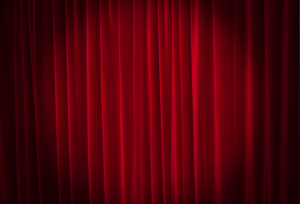Review
>
Everything is a little smoother in 2002’s HARRY POTTER AND THE CHAMBER OF SECRETS. The young actors give more assured performances; Steve Kloves’ script, having gotten so much exposition out of its way in Sorcerer’s Stone, is faster and more character-based; the camerawork (by Roger Pratt instead of John Seale) is more fluid; the sets by Stuart Craig more believable; the editing (by Peter Honess instead of Richard Francis Bruce) more even. Chris Columbus’ direction is still staid, compared with the films that were to come, but it has an easier, more confident feel.
Chamber of Secrets benefits from a stronger core plot from J.K. Rowling’s novel than Sorcerer’s Stone had–indeed, it’s too bad that in order to keep the film to a manageable 161-minute length (it’s still the longest of the series), so much detail about Tom Riddle’s vicious diary and its possession of Ginny Weasley had to be sacrificed. (One wonders if the filmmakers knew at the time how critical a place Ginny would come to play in the overall saga and if that might have changed the balance of the script.) It introduces such important characters as Moaning Myrtle (wonderfully played by Shirley Henderson), the house-elf Dobby (voiced by Toby Jones) and Lucius Malfoy (Jason Isaacs), as well as Gilderoy Lockhart, who turned out to be relatively incidental to the series but is great fun as played by Kenneth Branagh. The story also starts to introduce the darker emotional notes that would come to dominate later chapters.
One of the side pleasures of watching the Potter movies together is the education it provides in how special effects have improved in the past decade. Even though Chamber of Secrets came only a year after Sorcerer’s Stone, the CG animation of Dobby is far better than the troll had been in the previous film, and the Quidditch match is less cartoony and more exciting. The actors also do a better a job of integrating their actions with the effects.
Chamber of Secrets, however upgraded, is still superior as a film only to Sorcerer’s Stone in the Potter canon. Columbus, for all his improvement the second time around, continued to be an unexceptional director who couldn’t accomplish much more cinematically than a professional job of storytelling. The actors, too, were still working at inhabiting their characters: Grint grimaces slack-jawed too much to indicate surprise and fear, and there’s not much differentiation between Tom Felton’s sneers as Draco Malfoy.
With Chamber of Secrets, he Harry Potter series was moving in the right direction, trying to improve despite its great success, but not even the most optimistic viewer would have imagined just how much Warners was willing to allow the franchise to be reimagined going forward. The great leap in the series was still to come.
HARRY POTTER RETROSPECTIVE REVIEWS
Harry Potter and the Chamber of Secrets
Harry Potter and the Prisoner of Azkaban
Harry Potter and the Goblet of Fire
Harry Potter and the Order of the Phoenix
Harry Potter and the Half-Blood Prince
Harry Potter and the Deathly Hallows (Part 1)



